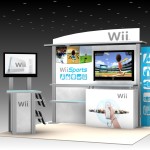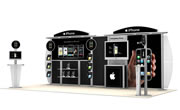- Don’t let the trade show exhibit buying experience intimidate you
- Your marketing objectives and strategy should dictate your exhibit marketing needs
- Be prepared for sticker shock. Exhibits can be expensive
- Where to buy depends on your goals. Do you need a large custom exhibit? Or do you need a portable, modular, or hybrid exhibit?
- Plan ahead. You’ll save money and make smarter decisions
How to Get Started
For the sake of simplicity, let’s assume that exhibit marketing is a new experience. Exhibit marketing is certainly not rocket science. You don’t need a marketing degree to be successful at exhibit marketing. However, it helps to get advice so you make the right decisions.
Buying your first exhibit can, at first, raise more questions than answers. There are different types of exhibits and different types of exhibiting. The best fit will depend on how you plan to use the exhibit, the image you want to project, and the budget you have to work with.
Chances are you’ll purchase your exhibit from a local exhibit company. Exhibit companies have been around for decades and understand exhibits and trade shows. Originally, exhibits were custom-crafted. Then exhibit systems evolved as an alternative to the high cost of custom craftsmanship. Now, there are multiple exhibit categories. Exhibit systems, which includes portable, modular, and hybrid exhibits, are evolving towards custom-crafted exhibits, and custom-crafted exhibits are evolving towards exhibit systems. Both have distinct advantages and exhibit companies work hard to carve out distinct niches along the custom to portable spectrum. The exhibit (or exhibits) that best fits your company’s exhibit marketing strategy will slot in somewhere along this spectrum. This is where an exhibit consultant can be very useful. Ultimately, an exhibit consultant wants to help you maximize your exhibit marketing potential.
(more…)





